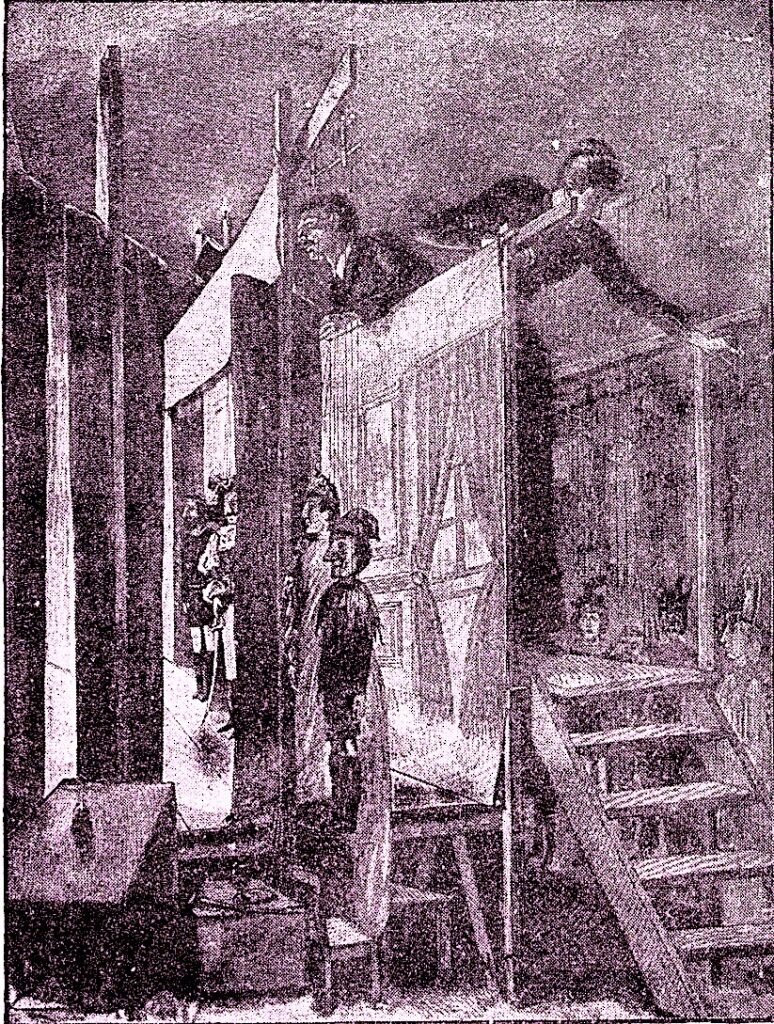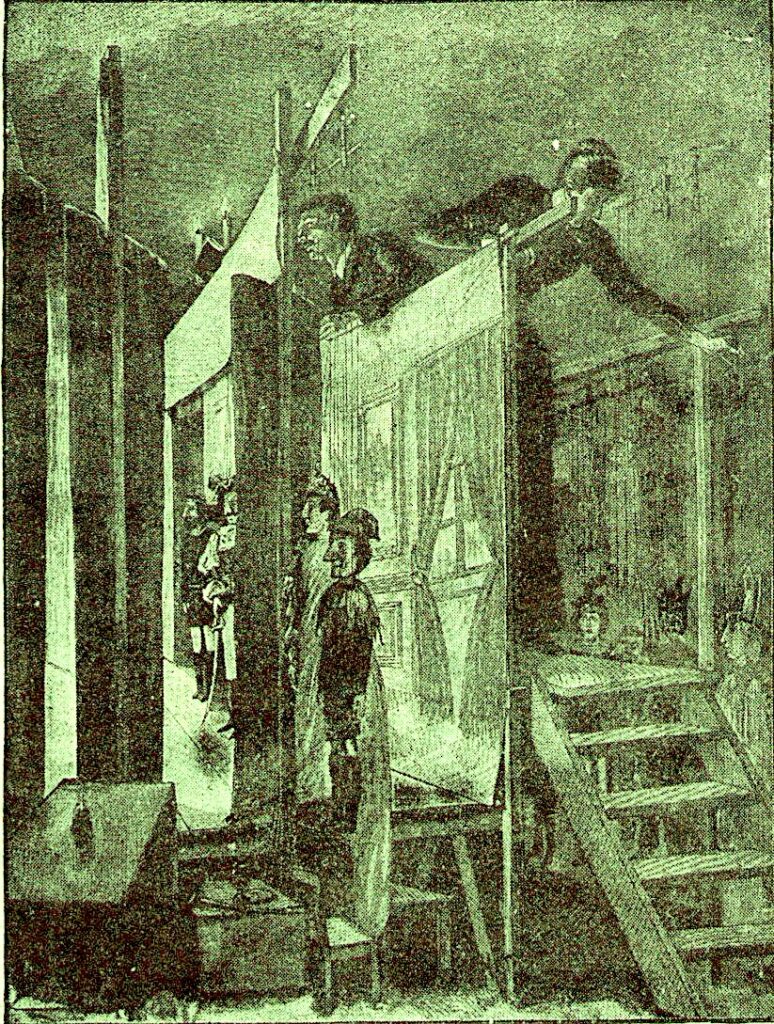Mujeres que abrieron camino, mujeres que dejaron huella. Recopilación de información por Elvia Mante
Maestra Graciela Amador «Gachita Amador»
Investigadora del folclore nacional, descubrió y recopiló corridos y canciones mexicanas que se trasmitían oralmente.
Fundó el teatro guiñol «Periquito», por medio del cual logró una excelente labor educativa que se prolongó hasta la televisión de los años cincuentas.
https://www.facebook.com/photo/?fbid=1554853324858405&set=a.155486315819 0755 http://biblioweb.tic.unam.mx/diccionario/htm/biografias/bio_a/amador_graci.htm
GRACIELA AMADOR (Gachita Amador)
Mucha historia por contar. (documento de la maestra Francisca Miranda Silva) (1898-1961)
Músico, escritora, dramaturga, vestuarista, diseñadora de títeres y coreógrafa
Como iniciadora del Proyecto de Teatro Guiñol del Departamento de Bellas Artes, participó en el grupo Rin Rin como animadora (1934) y luego como directora del grupo Periquito en 1936.
Para teatro guiñol escribió y adaptó: La alcancía (no representada), El baile de las gallinitas, El baile de los marineros, La caperucita roja (adaptación), Comino ama el trabajo, Comino el desaseado, Comino vendedor ambulante, La cucarachita hacendosa, El curioso (no representada), Firuleque de vacaciones, Firuleque el goloso, La flauta mágica (adaptación), La gallinita mentirosa (adaptación), La gallinita roja, Las habichuelas mágicas (adaptación), La invernada de los animales (adaptación), El juez de los divorcios (adaptación), El merolico, La murga, Los músicos de la aldea (adaptación), El oso y la imagen (no representada), Perico el desaseado, Perico el incorregible, Periquillo y el merolico, Periquito el goloso, Periquito vendedor ambulante, Periquito y el pastelero (no representada), La rana y el buey, El renacuajo paseador y La verruga desaparecida, entre otras.
También diseñó vestuario, escribió partituras, realizó coreografías y muñecos exclusivamente para las obras de teatro guiñol del Departamento de Bellas Artes. Como músico y flolklorista, escribió, recopiló y documentó canciones -además de trajes, costumbres y documentos- de los pueblos de México. Como ejemplo se puede mencionar La pastorela de navidad (1940), donde claramente se deja ver la influencia de antiguos “motivos” españoles, tanto en su literatura como en su música. Otros trabajos que son dignos de mencionarse son los realizados como directora y creadora para televisión del Teatro Cucurucho transmitido por X. H. G. C, Canal 5 que perseguía dos lemas: “Teatro para Niños de UNO a CIEN años” y la inmortal frase de Horacio “Divertir instruyendo”. Este fue el primer programa infantil con el que inició sus labores la televisión en México donde se transmitieron más de 500 funciones ininterrumpidas con más de cien títulos de los primeros cien capítulos, con una duración de media hora.
Entre los episodios escritos en el año de 1955 se pueden citar: Historia de una cabaña, En el país de irás y no volverás, La sirenita encantada, La abuelita zapatota, El gigante Tragaldabas, El palacio del mandarín, El depositario infiel, entre otros. De los cuentos transmitidos: Delgadita, En Escocia, El niño ángel, El gigante del bosque, La invernada de los animales, El renacuajo paseador, Juan el chico y Juan el grande, El ratón Pon Pon y el ratoncito Pin Pin, El chivo embrujado, El mandarín, Almendrita, Andarín, Comín Comán y Bebín Bebán, Frijolitos mágicos, Los ratoncitos perezosos, El ratoncito ambicioso, La sombra invisible, Teofilita colores, La gallina de los huevos de oro, La rosa encantada, Un raro obsequio, Veracruz y El maestro de música y Este era un rey (1956), sólo por mencionar algunos de un listado de 30 cuentos.
Su versatilidad y talento también quedó en los caminos de la música: Campanas de abril, Vals charapero (1940), Periquito (1950) y La cigarra y la hormiga (1953), inspirada la letra en la fábula de Lafontaine, entre muchas composiciones.
Innumerables son los proyectos radiofónicos y televisivos que llevó a cabo, como el de Amores inmortales que contaba con un número muy importante de capítulos para la televisión.
Fue fundadora de la Sociedad Folklórica Mexicana, incansable luchadora y organizadora de Comités pro ayuda de la infancia, los músicos, actores, etc.
https://www.facebook.com/3er-Encuentro-de-Trabajadores-del-Arte-de-los- T%C3%ADteres-294267801059041
Graciela Amador Sandoval nació en Villa de Cos, Zacatecas (México), en 1898 y murió en la ciudad de México en 1972. Perteneció a una familia norteña próspera, minera y comerciante, de tendencia liberal que se involucró activamente, cuán numerosa era, – 22 hermanos y los padres- en la lucha armada contra el gobierno del general Porfirio Díaz. Presenció de adolescente, la entrada triunfal de Francisco I. Madero a la ciudad de México, su trágico ocaso, el levantamiento constitucionalista y el triunfo del general Venustiano Carranza.
Las redes de relación revolucionarias de su familia, le dejaron como saldo vínculos con varios generales constitucionalistas, futuros presidentes del país y con capitanes y coroneles carrancistas amigos de su familia, quienes a la postre serían funcionarios y autoridades revolucionarias. Fue en este ambiente donde conoció a quien fuera su primer esposo, un desconocido capitán, estudiante de pintura, discípulo del Dr. Atl: David Alfaro Siqueiros, quien se convirtió en uno de los más importantes muralistas del México posrevolucionario.
Graciela Amador había militado en el PCM apasionadamente, como muchos de los integrantes de esa época, de una manera peculiar: callada, pero expresándose a través de la música, la escritura y la práctica editorial. Los demás, organizaban, daban discursos, participaban en mítines, pregonaban, denunciaban. Ella escribía, fabulaba, colaboraba en periódicos y organizaba su pequeño mundo para luchar a su manera. A pesar de haber escrito en diferentes etapas de su vida, corridos, comedias, farsas, cuentos breves, ensayos y posteriormente, sus memorias entre guiones de televisión y teatro en la última etapa de su vida, no se conoce su producción literaria, no es reconocida como escritora y ella misma no se veía como tal, en muchas ocasiones usó seudónimos o no firmaba sus textos. Sólo en algunas publicaciones hemos encontrado referencia a ella presentando su faceta literaria: Raquel Tibol publica en 1967 una selección de sus corridos y cuentos breves prologados por Juan de la Cabada (1967)3 ; Jorge Fuentes Morúa (1999) escribe un ensayo en el que señala una influencia significativa de los cuentos de Graciela Amador en la novela de José Revueltas (1999) e Iván Denegri escribe sobre el talento de fabular de Graciela Amador.
https://www.redalyc.org/journal/1390/139057274003/html/
Women who paved the way, women who left their mark. Compilation of information by Elvia Mante
Teacher Graciela Amador «Gachita Amador»
A researcher of national folklore, she discovered and compiled Mexican corridos and songs that were transmitted orally.
She founded the puppet theater «Periquito», through which she achieved excellent educational work that lasted until television in the 1950s.
https://www.facebook.com/photo/?fbid=1554853324858405&set=a.155486315819 0755 http://biblioweb.tic.unam.mx/diccionario/htm/biografias/bio_a/amador_graci.htm
GRACIELA AMADOR (Gachita Amador)
Lots of story to tell. (document by teacher Francisca Miranda Silva) (1898-1961)
Musician, writer, playwright, costume designer, puppet designer and choreographer
As the initiator of the Guiñol Theater Project of the Department of Fine Arts, she participated in the Rin Rin group as an entertainer (1934) and then as director of the Periquito group in 1936.
For puppet theater he wrote and adapted: The Piggy Bank (not performed), The Dance of the Little Hens, The Dance of the Sailors, Little Red Riding Hood (adaptation), Comino Loves Work, Comino the Untidy, Comino the Peddler, The Industrious Cockroach, The curious (not represented), Firuleque on vacation, Firuleque the sweet tooth, The magic flute (adaptation), The little lying chicken (adaptation), The little red chicken, The magic beans (adaptation), The wintering of the animals (adaptation), The divorce judge (adaptation), El merolico, La murga, The village musicians (adaptation), The bear and the image (not represented), Perico the untidy, Perico the incorrigible, Periquillo and the merolico, Periquito the sweet tooth, Parakeet Peddler, Parakeet and the Pastry Chef (not represented), The Frog and the Ox, The Walking Tadpole and The Missing Wart, among others.
She also designed costumes, wrote scores, choreographed and created puppets exclusively for the Department of Fine Arts’ puppet theater plays. As a musician and folklorist, she wrote, compiled and documented songs – as well as costumes, customs and documents – of the peoples of Mexico. As an example we can mention La pastorela de Navidad (1940), where the influence of old Spanish “motifs” can clearly be seen, both in his literature and in his music. Other works that are worth mentioning are those carried out as director and creator for television of the Teatro Cucurucho broadcast by ”. This was the first children’s program with which she began her television work in Mexico, where more than 500 uninterrupted functions were broadcast with more than one hundred titles of the first one hundred chapters, lasting half an hour.
Among the episodes written in the year 1955 we can mention: Story of a cabin, In the country where you will go and never return, The enchanted little mermaid, The big shoe granny, The giant Tragaldabas, The mandarin’s palace, The unfaithful depository, among others . From the transmitted stories: Delgadita, In Scotland, The Angel Child, The Giant of the Forest, The Wintering of the Animals, The Walking Tadpole, Juan the Small and Juan the Big, The Pon Pon Mouse and the Pin Pin Mouse, The Haunted Goat , The Mandarin, Almendrita, Andarín, Comín Comán and Bebín Bebán, Little Magic Beans, The Lazy Mice, The Ambitious Little Mouse, The Invisible Shadow, Theophyllite Colors, The Goose That Lays the Golden Eggs, The Enchanted Rose, A Rare Gift, Veracruz and The Music Teacher and This Was a King (1956), just to mention a few of a list of 30 stories.
His versatility and talent also remained in the paths of music: April Bells, Vals charapero (1940), Periquito (1950) and The Cigarra and the Ant (1953), the lyrics inspired by Lafontaine’s fable, among many compositions.
There are countless radio and television projects that she carried out, such as Amores immortales, which had a very important number of episodes for television.
She was the founder of the Mexican Folkloric Society, a tireless fighter and organizer of Committees to help children, musicians, actors, etc.
https://www.facebook.com/3er-Encuentro-de-Trabajadores-del-Arte-de-los- T%C3%ADteres-294267801059041
Graciela Amador Sandoval was born in Villa de Cos, Zacatecas (Mexico), in 1898 and died in Mexico City in 1972. She belonged to a prosperous northern family, mining and merchant, with a liberal tendency that was actively involved, how numerous it was, – 22 brothers and parents – in the armed struggle against the government of General Porfirio Díaz. As a teenager, she witnessed the triumphal entry of Francisco I. Madero into the city.
of Mexico, its tragic decline, the constitutionalist uprising and the triumph of General Venustiano Carranza.
The revolutionary networks of his family left him links with several constitutionalist generals, future presidents of the country and with Carrancista captains and colonels who were friends of his family, who in the end would be revolutionary officials and authorities. It was in this environment where she met her first husband, an unknown captain, painting student, disciple of Dr. Atl: David Alfaro Siqueiros, who became one of the most important muralists in post-revolutionary Mexico.
Graciela Amador had been a passionate member of the PCM, like many of the members of that time, in a peculiar way: quietly, but expressing herself through music, writing and editorial practice. The rest organized, gave speeches, participated in rallies, preached, denounced. She wrote, fabled, collaborated in newspapers and organized her little world to fight in her own way. Despite having written at different stages of his life, corridos, comedies, farces, short stories, essays and later, his memoirs between television and theater scripts in the last stage of his life, his literary production is not known, it is not recognized as a writer and she did not see herself as such, on many occasions she used pseudonyms or did not sign her texts. Only in some publications have we found reference to her presenting her literary facet: Raquel Tibol published in 1967 a selection of her corridos and short stories of hers prefaced by Juan de la Cabada (1967) 3; Jorge Fuentes Morúa (1999) writes an essay in which he points out a significant influence of Graciela Amador’s stories on the novel by José Revueltas (1999) and Iván Denegri writes about Graciela Amador’s talent for fable.
https://www.redalyc.org/journal/1390/139057274003/html/






